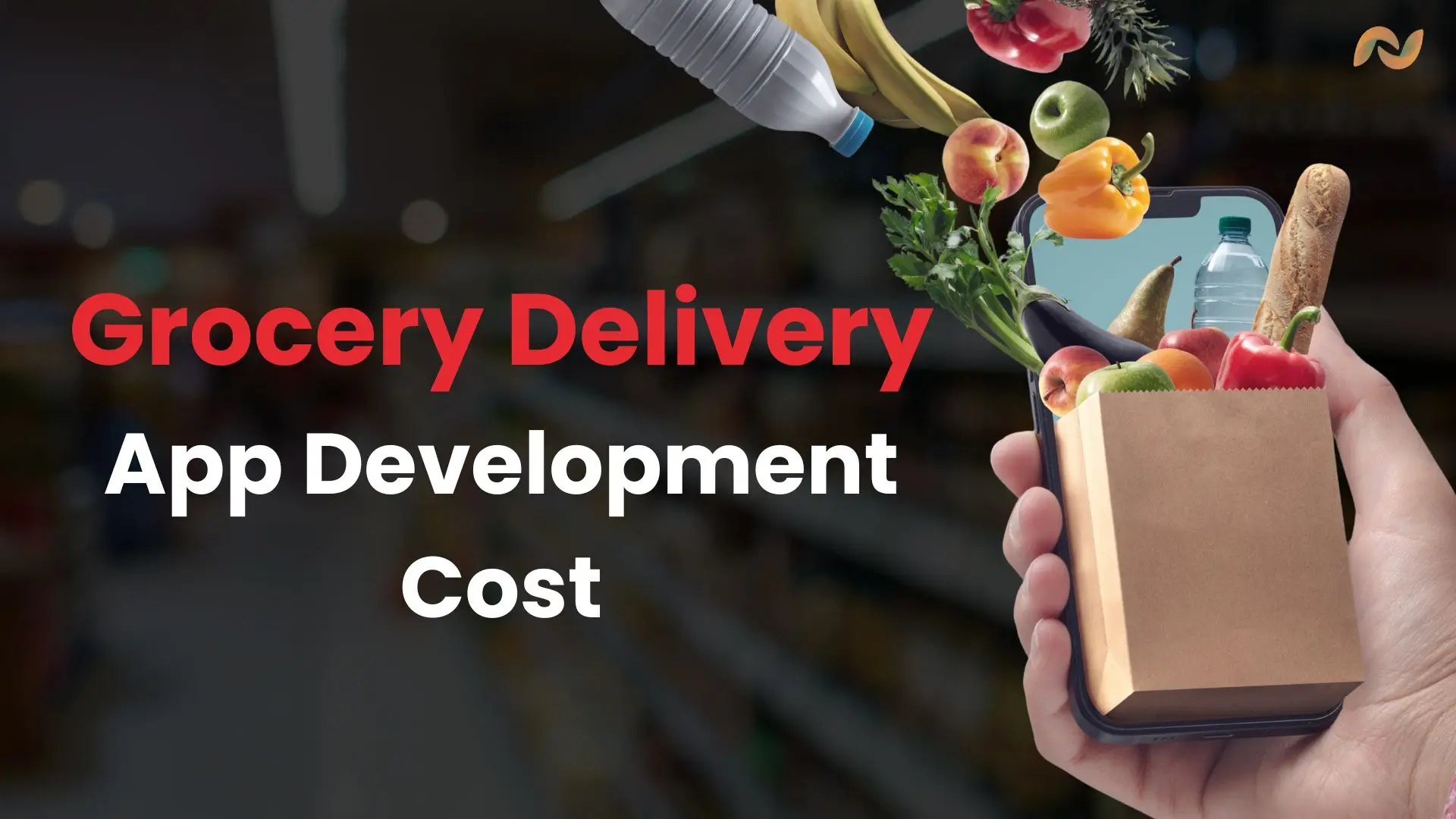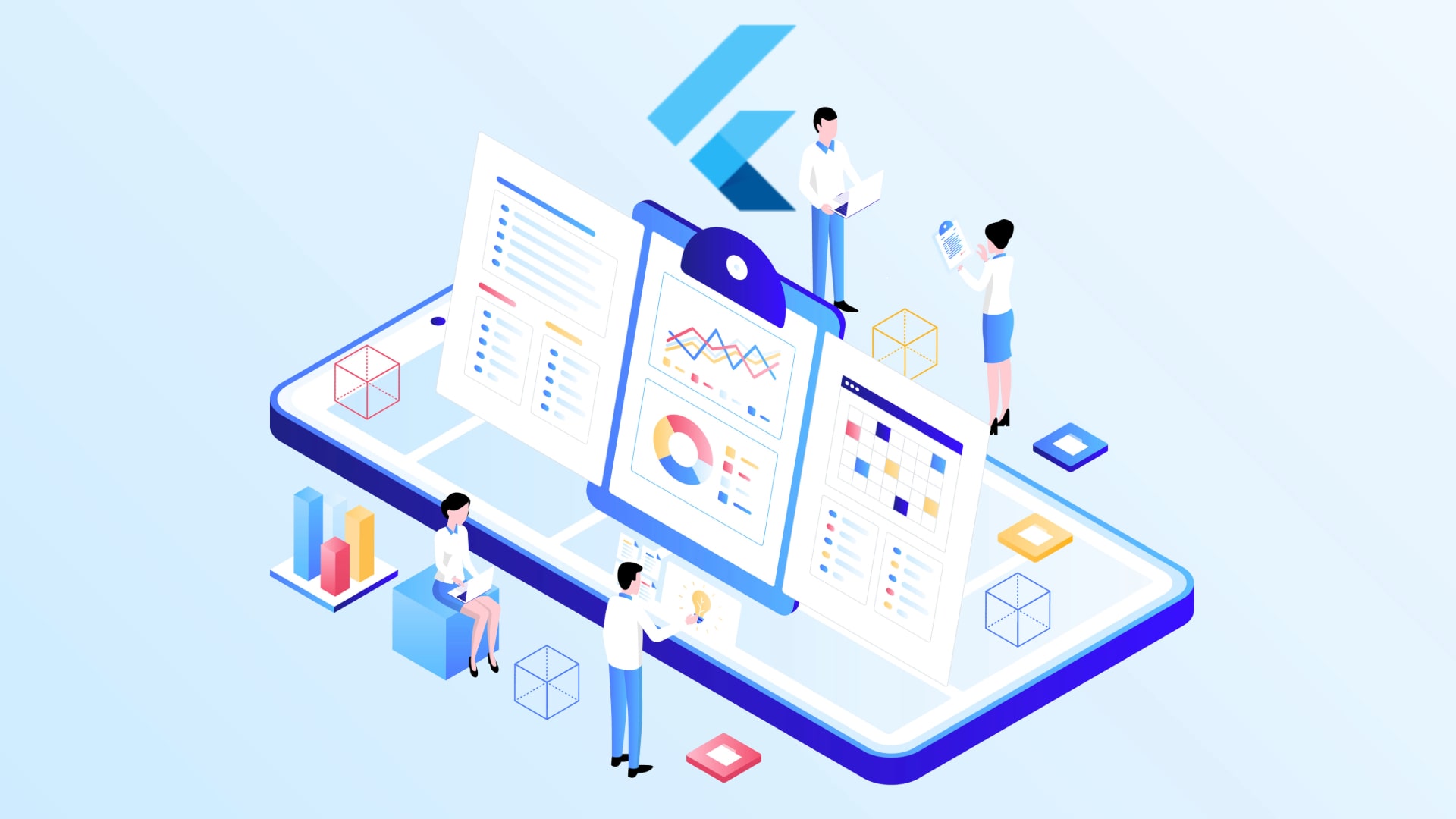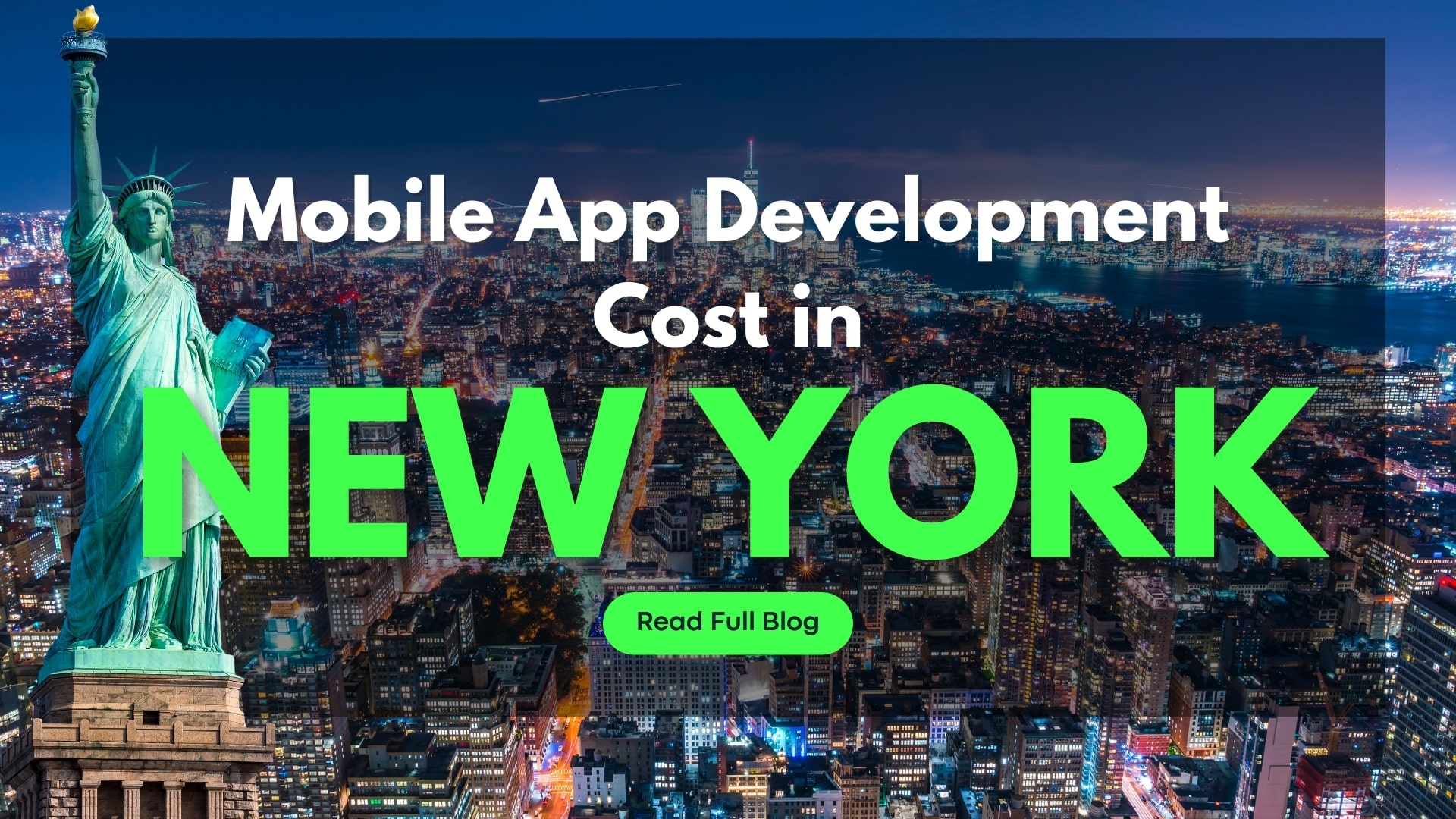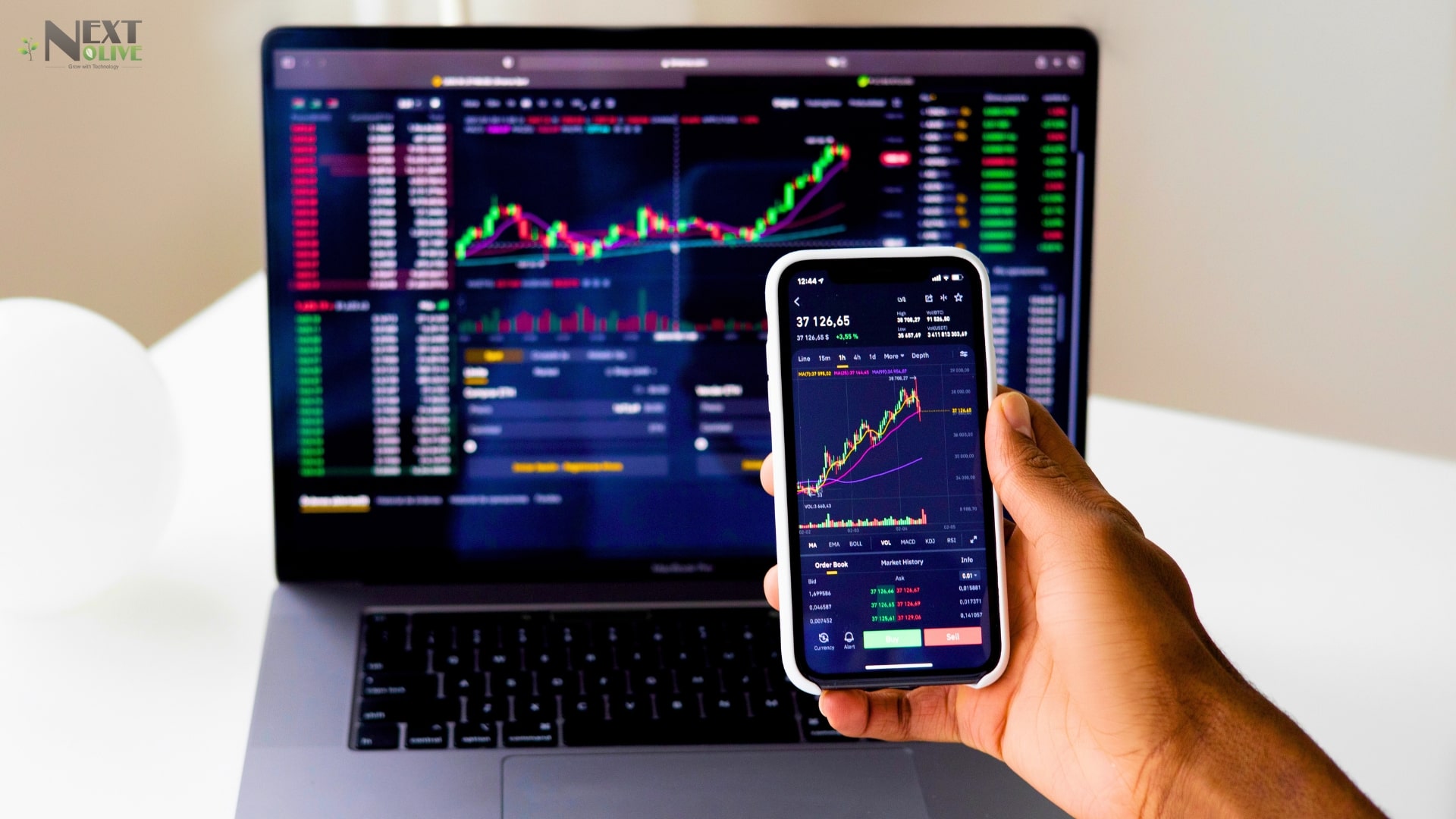How Much Does It Cost to Develop a Grocery Delivery App?
In 2025, grocery delivery apps are becoming a part of people’s day-to-day lives. Thanks to technology, people can easily order fresh fruits, vegetables, and other groceries with a single tap on the app, and the order will get delivered to their home in no time. The popularity of grocery apps increased during the COVID-19 pandemic, and since then, many businesses have taken this opportunity to launch their app. If you are looking to launch your app, the first thing you need to do is estimate the grocery delivery app development cost. This guide covers all the essential factors that affect the cost and aims to help you develop the right strategy for your business.
Table of Contents
ToggleGlobal Market Statistics of Grocery Delivery App in 2025

According to a report by The Business Research Company, the market size of grocery delivery app development in 2024 was $4.7 billion and reached $5.67 billion in 2025. With a CAGR of 20.2%. The market cap is expected to reach $11.83 billion in 2029.
Types of Grocery Delivery Apps and Their Development Cost
[1] Market Aggregator Applications
These mobile apps serve as a platform for connecting various grocery stores and customers. These apps offer a large variety of items to choose from for the users. These apps have many features, such as a payment gateway and real-time order tracking etc. Cost Estimate: $15,000 to $30,000 or more.
[2] Retail-Owned Applications
As the name suggests, retail-owned apps are owned by retail store owners. These apps offer a personalized touch of the brand and exclusive discounts and offers on its products. These apps include features such as customer profile and inventory management etc. Cost Estimate: $10,000 to $25,000.
[3] Quick Commerce Apps
Quick commerce apps started to gain popularity in late 2024 and are popular among people who live in metro cities who want groceries and other items quicker than traditional e-commerce apps. These apps aim to offer grocery delivery in a limited period of between 10 to 30 minutes. Cost Estimate: $20,000 to $50,000 or more.
[4] Subscription-Based Service Applications
Subscription-based apps provide delivery services through a subscription plan. These apps target users who consistently place orders at a fixed time each day for fresh items such as milk, butter, curd, vegetables, etc. Cost Estimate: $12,000 to $25,000.
[5] Local Delivery Applications
Local delivery apps are similar to aggregator apps, but they combine the local stores and local businesses of a specific area or region to efficiently cover the range of users within the area. These apps offer community-driven services and prioritize flexible route planning. Cost Estimate: $8,000 to $25,000 or more.
Factors That Influence Grocery Delivery App Development Cost in 2025
[1] App Size and Complexity
The size of the mobile app plays an important role in deciding the grocery delivery mobile app development cost. A basic app with essential features and functionalities would cost less than an app with medium to high complexity. With each complexity, the features is fewer or more, and thus affects the overall cost.
[2] Platform Selection
Android and iOS are the two major platforms that are widely used in the majority of mobile devices. Each platform has its pros and cons, and developing a single app for individual platforms tends to be costly. But creating a native app offers better hardware and software utilization. Opting for cross-platform development reduces cost but might have performance and compatibility issues on some devices.
[3] UI/UX Design
The user interface and user experience are one of key factors that affect the development cost. A simple ui/ux would cost less to design and develop, but a highly complex ui/ux that has custom animations and smooth transitions between multiple screens would definitely cost more.
[4] Third Party Integration
A grocery delivery app is incomplete without extra features. Third-party APIs for payment gateway and navigation require subscription or licensing fees that are less than designing and developing an entire API from scratch. Also, the complexity of integrating the API would affect the overall development cost.
[5] Development Team
The size and location of the development team also matter. For a basic to medium-complexity app, a small-sized development team would be fine, but the development time would be increased, and the team would charge less. A large team is good for complex projects, and the delivery time depends on the complexity and overall size of the project. If the team is in the USA, it would charge more compared to a team situated in southeast asian countries. You can also outsource your project to a grocery delivery app development company.
[6] Security
Security is a non-negotiable aspect of the mobile application. A secure app protects the data and privacy of the users and builds trust. Security measures such as end-to-end encryption, biometric login, and 2-factor authentication etc, are some of the essential security features and should be integrated into the app, which would increase the cost, but it is beneficial in the long run.
[7] Maintenance and Updates
An app needs regular monthly maintenance to ensure it works fine without any issues. Regular updates are developed and launched for the app to give it new features, functionalities, and security updates, and fix any issues related to performance. This adds to the overall development cost.
Essential and Popular Features That Add Up to the Grocery Delivery App Development Cost
[01] User Registration and Profile Creation: $500 to $1,000.
[02] Product Search and Filter: $1,000 to 2,500.
[03] Shopping Cart and Checkout: $600 to $2,000.
[04] Payment Gateway: $1,500 to $3,000.
[05] Real-Time Order Tracking: $2,000 to $4,000.
[06] Push-Notifications: $600 to $1,200.
[07] Admin Panel: $3,000 to $12,000.
[08] Delivery Partner Panel: $2,500 to $11,000.
[09] Discounts and Loyalty Programs: $2,000 to $6,000.
[10] Multilanguage and Currency Support: $3,500 to $8,500.
[11] Reporting and Analytics: $4,000 to $12,000.
[12] AI-Chatbot and Customer Support: $3,000 to $10,000.
Major Panels of a Grocery Delivery Application
[1] Admin Panel
The admin panel is where the main controls of the whole mobile app are present. The admin can assign orders, make security changes, add or remove users, and provide them with permissions, etc.
- User Management: Manage the users and delivery partner profiles and perform operations such as add or delete, etc.
- Order Management: Easily track the incoming, in-progress, and delivered orders along with their status, such as cancelled, etc.
- Inventory Management: Oversee the inventory of all the stores connected and alert them to take the necessary actions.
- Payment Management: Check the payment status of the orders, such as done or pending, refund, and other payment disputes.
- Reporting and Analytics: Get access to the analytics dashboard to see the progress of your app and stores, and also get insights on the sales and revenue, and other trends.
- Discounts and Promotions: Create and manage discount codes and coupons, loyalty programs, etc.
- Delivery Tracking: Track and manage the delivery partners and create optimized routes for them.
- Push Notification Management: Easily send important alerts, new deals, and discounts, etc, to the users.
- Customer Support Tools: Resolve all the user queries and issues efficiently.
- Vendor Management: Manage the connected partners by adding or removing them.
[2] User-Side Panel
- User Registration and Profile Creation: Users can register themselves on the app and create a personalized profile.
- Product Search and Filters: Search for the desired product and apply filters for a precise and deeper search.
- Shopping Cart: Add and view the products in the shopping cart and purchase all together at once.
- Order Scheduling: Schedule the delivery for the desired time and date.
- Payment Options: Select from the multiple payment options, such as card or cash etc.
- Real-Time Order Tracking: Track the status of the order in real-time.
- Offers and Discounts: Apply discounts if applicable, and get the best deals on the exclusive offers.
- Order History: View the past orders for reordering if required.
- Push Notifications: Get alerts regarding the order delivery or the latest offers and discounts.
- Customer Support: Contact the customer support by call or message if the user encounters any issues.
[3] Store-Side Panel
- Inventory Management: Check the inventory of the store and restock when required.
- Order Management: Check the status of the order and accept, reject, or update the status of the order.
- Order Notifications: Get real-time alerts of new orders easily.
- Product Management: Easily add, remove, or edit the product and its details.
- Payment Management: Monitor and manage the incoming and pending payments of the orders.
- Analytics Dashboard: Get detailed reports and perform analysis of the app data to make better decisions.
- Promotions Management: Create and manage exclusive discounts, promotions, and offers.
- Customer Communication: Resolve the customer queries and queries related to product or delivery, etc.
- Delivery Management: Assign orders to the delivery personnel.
- Feedback and Reviews Management: See the customer feedback and reviews for improvement of the services.
Incorporate a Step-by-Step Grocery Delivery App Development Process

[1] Project Research and Requirement Gathering
This stage is the beginning of the app development process. In this stage, first, the project idea is proposed, which states the goals and objectives of the app. Then, extensive market research is conducted to analyze the competitors and potential opportunities, along with the threats. Afterwards, multiple meetings with the client and stakeholders are conducted to get the project requirements and core functionalities. The requirements are assessed on different factors such as budget, time constraints, and legal aspects, and an SRS document is created and signed by the client. Cost Estimate: $3,000 to $12,000 or more.
[2] Project Planning
Now, after the project requirements are gathered, a detailed project plan is created. Planning is done to ensure the development process completes without any issues and on time. In this stage, the project is divided into multiple smaller modules and assigned to each member of the development team. Also, project milestones are clearly stated, and the tech stack, along with the right development methodology, is selected to ensure the mobile app is packed with the latest technological features and functionalities. Cost Estimate: $2,000 to $10,000 or more.
[3] Wireframing and Prototyping
In this stage, the wireframes of the mobile app are developed. Wireframes are 2D sketches that outline the basic structure of the mobile app, focusing on elements like buttons, navigation, content placement, etc. After the wireframe is completed, the team develops a working prototype of the app to help them and the client get an idea of how the app would look after being fully developed. Cost Estimate: $8,000 to $20,000 or more.
[4] Development and Coding
In this stage, the mobile app is developed as per the plan and methodology. The frontend is designed and developed, and contains visually appealing elements. The backend contains the server, database, business logic, and more. APIs for the maps and payment gateway, etc, are integrated into the app to meet the client’s expectations. Cost Estimate: $15,000 to $50,000 or more, depending on the project size and complexity.
[5] QA Testing and Debugging
After the app is developed, rigorous testing is performed on it. Various test cases are made, and the app is tested in simulated situations to check whether it is performing the tasks it was developed for or not. Various types of testing, such as unit, integration, functional, non-functional, etc, are performed to test the app on various aspects. Cost Estimate: $4,000 to $15,000 or more.
[6] Deployment and Launching
After the app is properly tested, it is ready to be deployed. The mobile app is submitted to the app store to be reviewed. Once the app is approved, it is launched on the App Store or Play Store to be downloaded by users. A lot of marketing campaigns are conducted to promote the app to reach a wider audience. Cost Estimate: $1,500 to $9,000 or more.
[7] Post-Launch Maintenance and Support
Every app needs regular maintenance to keep it running for a long time without any issues. New updates are also required to fix any bugs and errors, and introduce new features and functionalities to keep the users engaged and ensure the mobile app is on par with its competitors. Cost Estimate: $5,000 to $1,000 or more annually, depending on the project size and complexity.
Use the Latest Tech Stack in Grocery Delivery App Development
[1] Frontend: Java, Swift, Kotlin, Objective-C, Flutter, React Native, Dart, Ionic
[2] Backend: Java, Python, Node.js, Django, Ruby on Rails
[3] Web Servers: Apache, Nginx
[4] API: REST, GraphQL, SOAP
[5] Database: MySQL, PostgreSQL, MongoDB, Cassandra
[6] Mapping API: Mapbox, Google Maps Platform, Apple Maps
[7] Geolocation Services: Core Location for iOS, Location Services for Android
[8] Payment Gateway API: PayPal, Stripe, Razorpay
[9] Cloud: AWS, Azure, GCP
[10] Analytics: Google Analytics, Firebase Analytics, Crashlytics
How to Monetize Your Grocery Delivery App?
[1] Delivery Fees
You can introduce delivery fees for every order. The fees should be decided as on the order size.
[2] Subscription
You can offer monthly or annual subscription plans that users can purchase. The plans would offer benefits like free delivery, faster delivery, or exclusive discounts etc.
[3] Commission
You can charge commission in the form of money from the restaurants on every order placed and delivered through the app.
[4] In-App Advertising
You can offer ad slots for other brands and companies to run their ads on your app in exchange for money.
[5] Surge Pricing
Surge pricing can be done in high-demand periods in which the delivery fees or the price of the item are increased in that particular period.
[6] Upselling and Cross-Selling
During the customer’s checkout, you can suggest complementary items like ketchup, etc, to boost revenue.
[7] Loyalty Programs
You can offer rewards or cashback to users who frequently visit your app.
Tips for Optimizing Grocery Delivery App Development Cost
[1] Prioritize Cross-Platform Development
Cross-platform app development utilizes a single codebase to develop the app for multiple platforms. This reduces the overall cost of developing a single app for various platforms, such as Android and iOS, and reduces the overall time to develop the app.
[2] Select the Right Development Team
Choose the right team that delivers the best outcome and quality for your budget. For a small and medium-complexity app, a small-sized development team would be suitable, and for a complex project, a large team would be best suited. You can also hire a food delivery app development company to better understand your project.
[3] Leverage Third-Party APIs
Third-party APIs such as payment gateway and navigation, etc, come with licensing fees, which are cheaper to afford than developing a custom API from scratch for your mobile application.
[4] Use Cloud Platforms for Scalability
Utilize cloud platforms just in case you wish to upgrade your app in the future. Cloud platforms come with subscription fees and eliminate the need to develop hardware infrastructure, which would increase the cost.
[5] Set Clear Requirements
Set clear project requirements and objectives as early as possible so that the team can focus on the development of the necessary and required features and functionalities and avoid developing unnecessary features that would increase the cost.
How to Select the Right Grocery Delivery App Development Company in 2025?
To select the right company, you need to check some important traits in it, such as on-time delivery of the project, setting up clear project milestones, ensuring end-to-end communication, and following a client-centric approach. Speaking of these traits and qualities, Next Olive outshines as the leading grocery delivery app development firm that offers its grocery delivery app development and food delivery app development services in over 20 countries and has more than 13 years of experience. You can rely on them for unparalleled quality product delivery.
Conclusion
such as size, type, complexity, and platform of the app. The grocery app development market will continue to grow with a CAGR of 20.2%. Many businesses are integrating various latest technologies, such as artificial intelligence and machine learning (AI/ML), to develop chatbots and automate repetitive tasks. Castle, you can outsource your app project to a reliable grocery app development company that can assess your project idea and give you an estimate of the grocery mobile app development cost and maximize the output for your investment. In conclusion, the cost to develop a grocery app in 2025 depends on various factors.
Frequently asked questions (FAQs)
The mobile app development cost in USA depends upon several factors such as size, type, and complexity of the project. Here is a general estimate of the cost:
- Basic App: $5,000 to $20,000.
- Medium-Complexity App: $20,000 to $40,000.
- Highly-Complex App: $40,000 to over $100,000.
The food delivery app development cost is identical to the general cost of mobile application development.
We leverage 2 popular development methodologies in our development process: the Waterfall model for projects with fixed requirements and the Agile model for variable and changing requirements.








